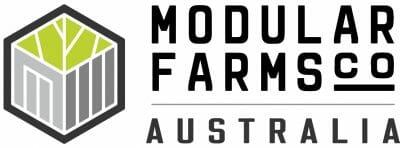
When it comes to maximizing R&D efficiency and reducing errors to improve the products we’ve engineered, all the way in Canada, distance isn’t a factor! To make what we do bigger and better, we work closely with Research and Development Engineer, Hala Chaoui, in Toronto! With a PhD in Agricultural and Biological Engineering, Hala works towards prototyping lean-designs to reduce energy waste and operational costs for all future Modular Farmers.
We chatted with Hala to find out more about her current projects, role within the Modular Farms’ team and the reason why agtech makes her tick.
Take us through a typical day on your job at the Autodesk Labs.
On some days, my favourite type of days, I get to do some design work on a digital model or circuitry sketches, then go into the workshop and laser cut the design or solder a circuit. On other days, I get to successfully test what I built as well. Before building I find it important to think a design through, even over a few days, in order to minimize the trial and error as we create a functional prototype. We occasionally have brainstorming meetings within our team to do exactly that!
What are some of your current projects?
I am working on control mechanisms to make the farm more responsive and less infrastructure-heavy. It will also be adaptable to growing organic crops in solid media. With the help of colleagues, I am working on ways to scale down vertical farming structures to make it easier to start small scale indoor farming. Overall, this will make the farm more affordable and less prone to high humidity. The re-envisioned farm will address the concerns of those who have avoided hydroponics so far.
How did you get into agtech and vertical farming? What about it do you find interesting?
I gradually got into agtech after studying agricultural engineering. I’ve since accumulated an eclectic bank of experience from managing research labs, working in government and exposure to the industry itself. I created my own vertical farming devices before my current job as well. Throughout my career so far, I’ve been a member of the American Society of Agricultural and Biological Engineers. From there, past colleagues and I were able to create conference sessions on technology for urban agriculture. Over the years, I’ve always wished I could use my cumulative experience to create such technology, and in my current job I finally can!
What does sustainability and local eating mean to you? Is this something you integrate into your routine?
Early on in my training, I learned that sustainability is 3-prongs; ecological, social and economical. This basically means producing things without harming nature (and the resources we rely on), while creating local opportunities for income and in an economically viable way. I do care about eating local, partly because short transportation periods preserve more of the taste in produce, but I also value whether food was grown using ecologically sound methods.
What do you envision for the future of Modular Farms? What is being done to increase farmer optimization for the next generation of Modular Farmers?
When I joined, I realized the existing team already had an interesting goal; to make Modular Farms so modular it can be implemented in small scale spaces such as homes and kitchens. In adopting this goal, my objectives now are to create the core technology that makes multi-scale modular farming possible. This new technology makes Modular Farms simpler to make, yet, sophisticated in how they operate. This means future Modular Farmers won’t incur large capital costs to begin indoor vertical farming.
How do you see the adoption of vertical farming, especially in colder Northern areas?
The Modular Farms we’re aiming for would integrate quite well in northern habitats, utilizing the ambient conditions of Northern Areas to minimize the energy cost of indoor farming. For example, farms rely on energy-consuming lights, ultimately generating wasted heat. Part of this heat could instead be utilized within a dwelling itself to offset the heat bill and increase the farm’s energy efficiency. Snow could also be used as a source of water and a passive heat exchanger for the farm.
If you can create a dream module of your own, with no limitations on feasibility and capabilities, what would it be? What functions would it carry?
Under ideal conditions, I would upgrade the module we’re currently working on to connect and integrate mobile wireless sensors into the farm. Otherwise, I would preserve the simplicity of what we’re now designing because a simple, yet, sophisticated vertical farm would be accessible to many more types of growers. There are plenty of radical and incremental innovations one can implement in the farm to make it as scalable and effortless as possible. So, if budget permitting, I would choose to invest in an even larger R&D team!
Learn more about Autodesk and the space at MaRS at www.autodesk.com/toronto
Have a question? Contact us at sales@modularfarms.co or read our FAQ section.

